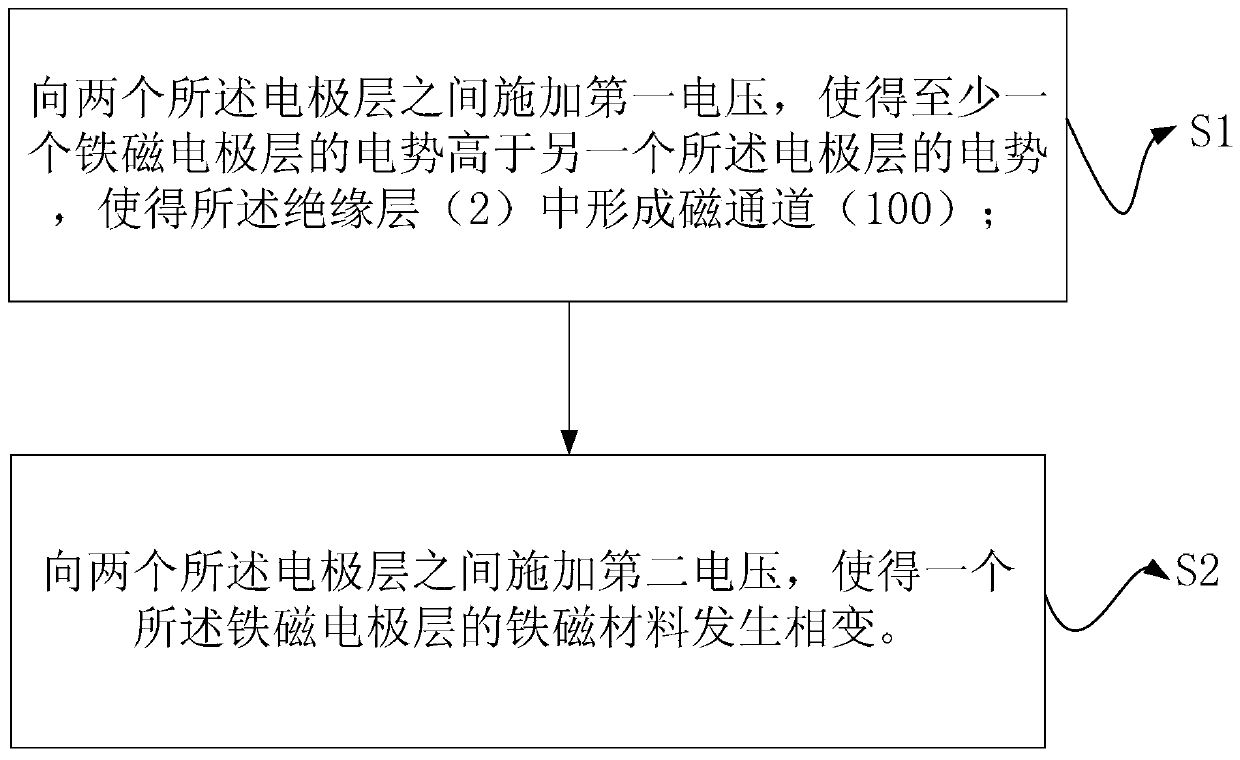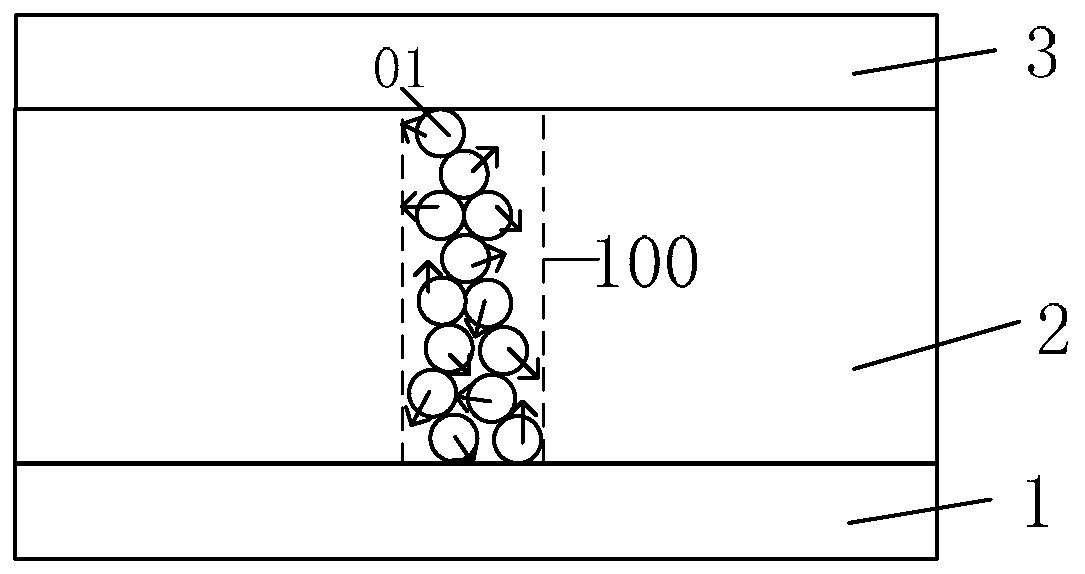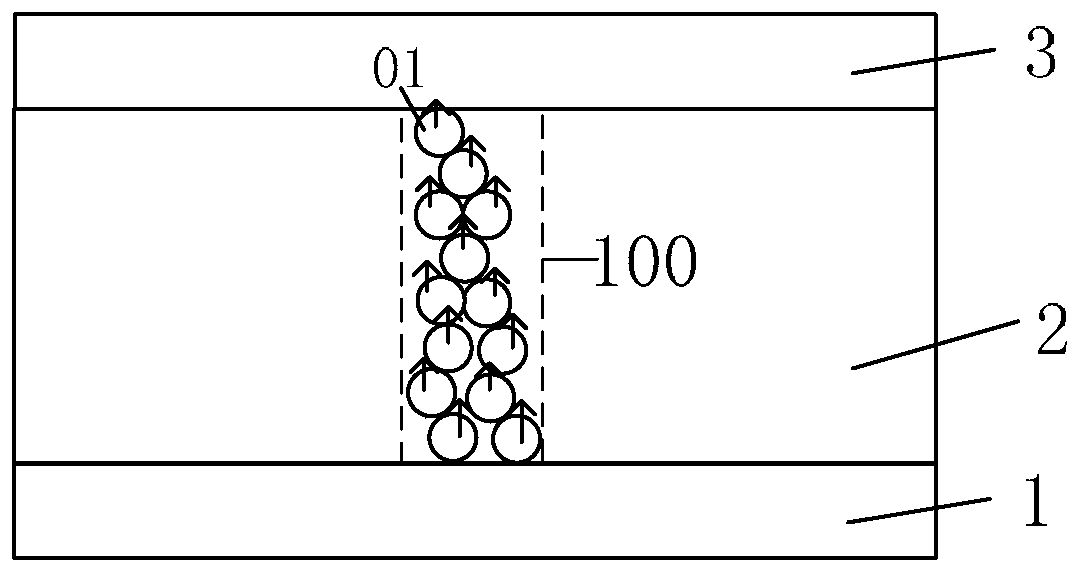Regulating method for storage state of resistive variable memory
A technology for resistive variable memory and storage state, which is applied in the field of memory, can solve the problems of resistance transition fluctuation of resistive variable memory, and achieve the effects of reducing design cost, alleviating volatility, and simple operation
- Summary
- Abstract
- Description
- Claims
- Application Information
AI Technical Summary
Problems solved by technology
Method used
Image
Examples
Embodiment
[0054] The resistive variable memory includes a substrate, a seed layer, a first electrode layer, an insulating layer, and a second electrode layer stacked in sequence, wherein the second electrode layer is a ferromagnetic electrode layer, and the substrate is SiO 2 substrate; the seed layer is a Ti metal film with a thickness of 10nm; then, the first electrode layer is a Pt layer with a thickness of 30nm; the insulating layer is HfO with a thickness of 20nm 2 layer; the second electrode layer is a 50nm Fe layer.
[0055] The control method of the resistive variable memory includes:
[0056] Step S1, electrically connect the second electrode layer 3 to the anode of Keithley 4200, electrically connect the first electrode layer 1 to the ground terminal of Keithley 4200, and apply a forward scanning voltage to the second electrode layer 3, called the first voltage , so that the above insulating layer 2 is formed figure 2 As shown in the magnetic channel 100, at this time, the ...
PUM
 Login to View More
Login to View More Abstract
Description
Claims
Application Information
 Login to View More
Login to View More - R&D
- Intellectual Property
- Life Sciences
- Materials
- Tech Scout
- Unparalleled Data Quality
- Higher Quality Content
- 60% Fewer Hallucinations
Browse by: Latest US Patents, China's latest patents, Technical Efficacy Thesaurus, Application Domain, Technology Topic, Popular Technical Reports.
© 2025 PatSnap. All rights reserved.Legal|Privacy policy|Modern Slavery Act Transparency Statement|Sitemap|About US| Contact US: help@patsnap.com



